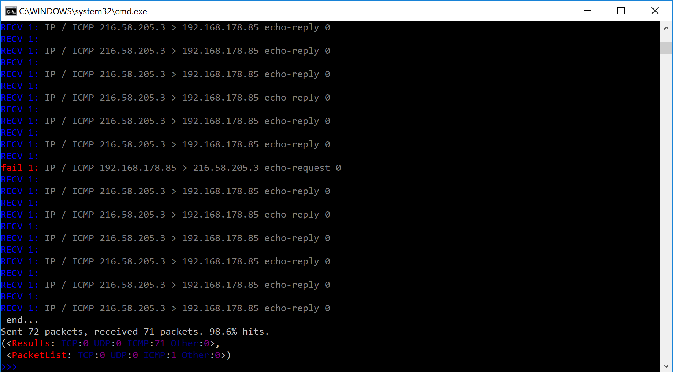2020-12-02T01:22:30.390Z - DHCP is a network protocol used on IP networks where a DHCP server automatically assigns an IP address and other information to each host on the network. We can use tcpdump command to filter DHCP packets. DHCP operations fall into four phases: server discovery, IP lease offer, IP lease request, and IP l. Cumulus@switch:$ sudo -E apt-get install tcpreplay Reading package lists. Done Building dependency tree Reading state information. Done The following NEW packages will be installed: tcpreplay 0 upgraded, 1 newly installed, 0 to remove and 1 not upgraded. Need to get 436 kB of archives.


2.4 Installing tcpdump
The tcpdump application may already be installed on your Linux distribution. tcpdump requires the libpcap library, which in all likelihood is also already installed as an RPM package. libpcap is the basis of all packet-sniffing applications. This library provides a portable framework for low-level network monitoring. Besides packet sniffing, it is used for network statistics collection, security monitoring, and network debugging. Most hardcore security administrators prefer downloading the latest source, verifying the PGP signature, and compiling and installing them manually. If tcpdump and libpcap are not already installed, compile both programs from source. Even if you already have the RPM version, consider installing the latest version using the source code. The latest versions very often have much better performance and stability than the pre-installed binaries. Simply uninstall the preinstalled versions of libpcap and tcpdump and proceed. As an example, if your distribution uses RPM packages, you can remove tcpdump by using the following command line:
After copying the compressed files to a standard location, such as /usr/local/src/, uncompress the code. Here is an example install:
Replace the version number (as shown above) with the latest release number. The commands for installing both applications are covered in the INSTALL files included with each application's source code. These are fairly standard and do not require much modification. You may add other configuration options to the install process. To view these options, use the --help flag following the configure command. In most cases, though, you won't need any options. Here's how to install libpcap and tcpdump from source:
|


Need to debug a slow Internet connection in OS X? Or simply have a desire to watch incoming and outgoing DNS (domain name service) queries in Leopard? Then tcpdump is your friend.
Install Tcpdump On Windows
Open a terminal window and use the following command:
sudo tcpdump -i en1 -s 128 port 53
Install Tcpdump Linux
-i Sets which interface to listen to. en1 for me is the AirPort wifi card. en0 would be the ethernet card.
-s sets the number of bytes to “sniff” or “snarf” per call that goes through this interface. 128 gives us a bit better coverage than the default 68 bytes. If you find that tcpdump requests are showing up simply as [|domain], that means that the request is longer than 68 bytes and is truncated. To prevent truncation, increase -s.
port 53 is simply the network port for DNS communcation
How To Install Tcpdump For Mac High Sierra
Learn more about tcpdump at developer.apple.com